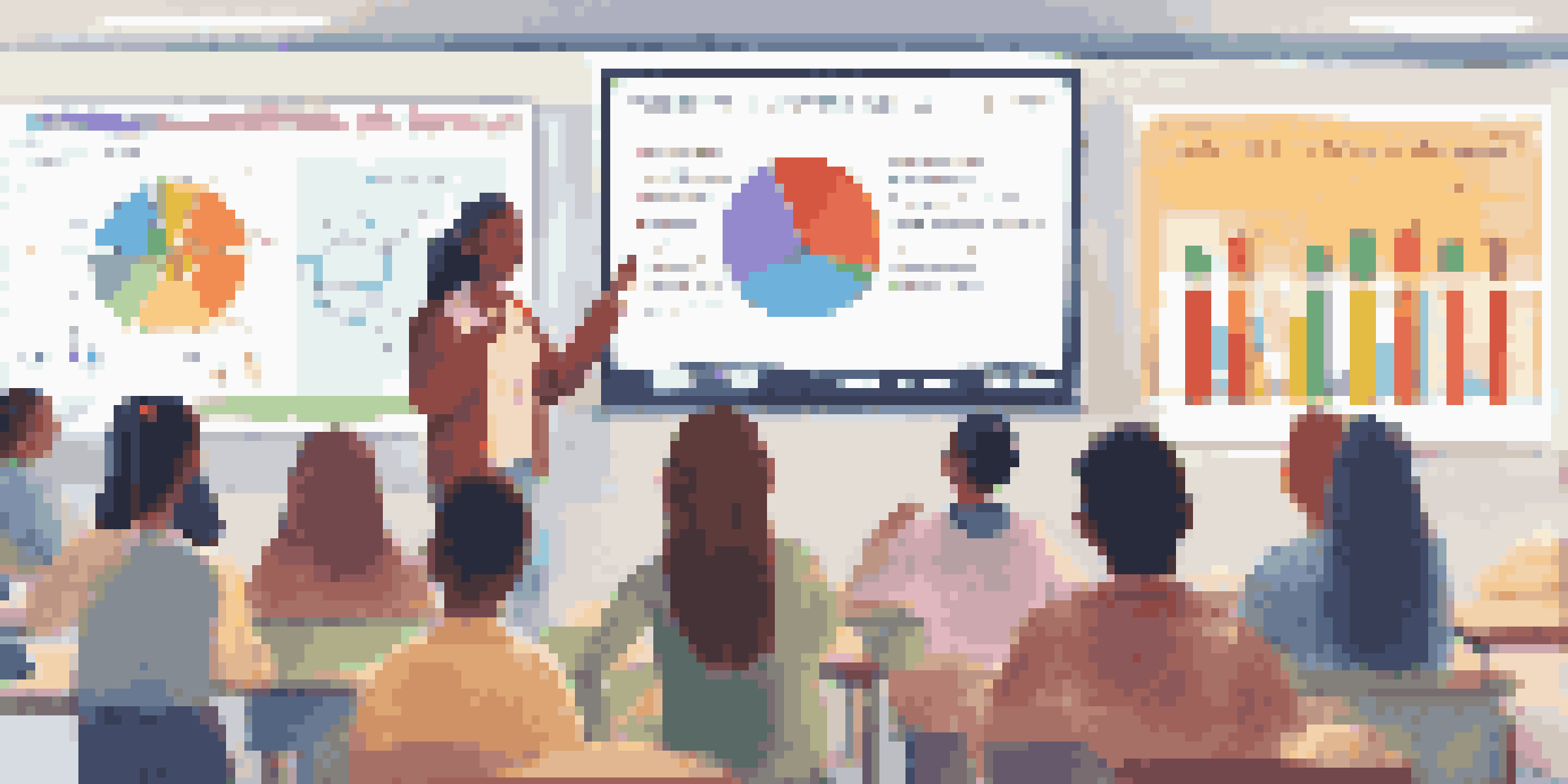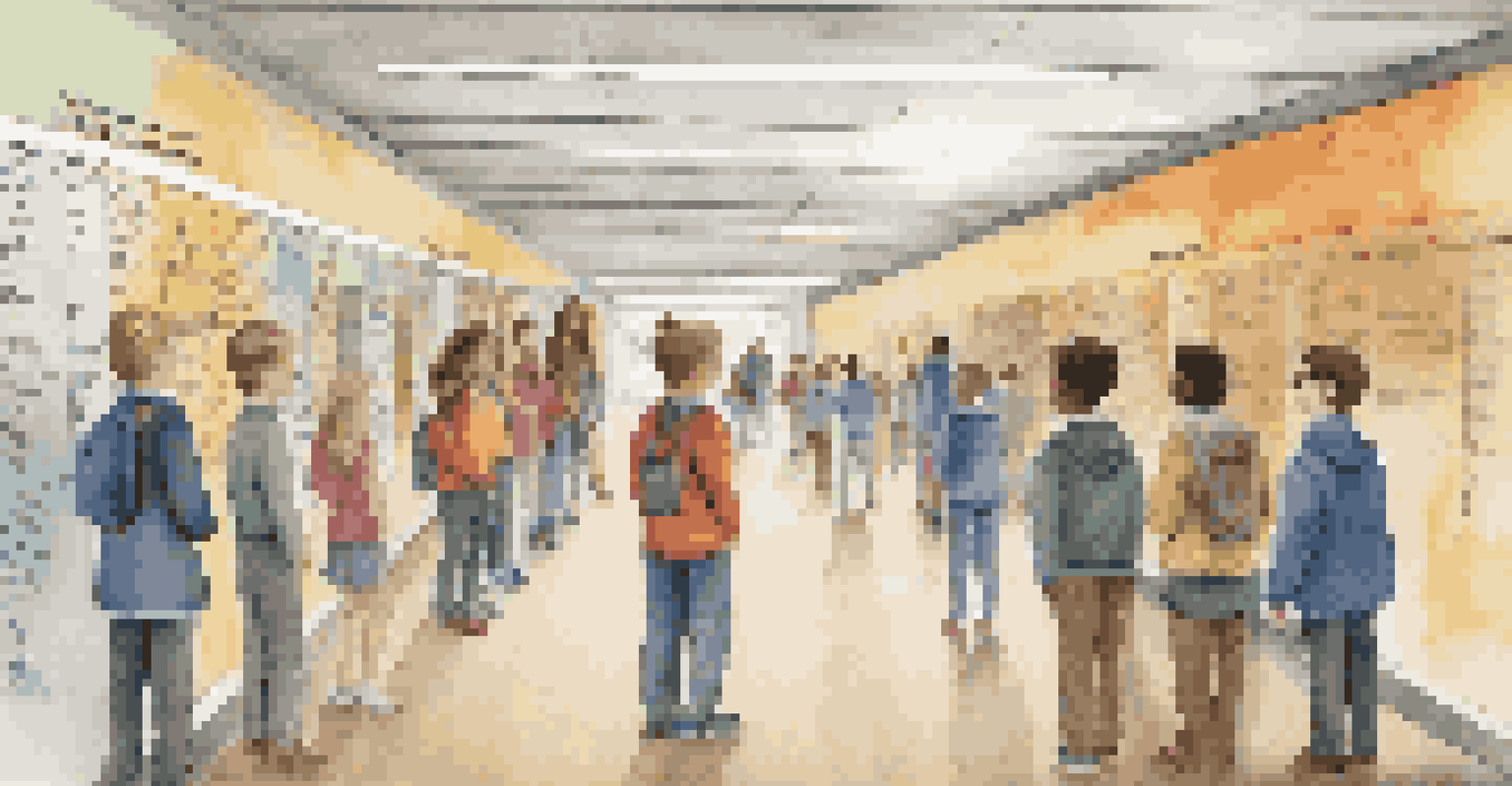Using Visual Aids to Improve Communication and Understanding

The Importance of Visual Aids in Communication
Visual aids play a crucial role in communication, making complex ideas easier to grasp. When we talk about visual aids, we're referring to tools like charts, graphs, images, and videos that support spoken or written messages. These elements help to simplify information, making it more digestible for the audience, regardless of their background knowledge.
A picture is worth a thousand words.
Consider how a well-designed infographic can convey statistics in a way that a lengthy report cannot. By presenting data visually, we not only grab attention but also enhance retention, allowing viewers to remember the information better. This is especially true in educational settings where students might struggle with traditional text-heavy materials.
Ultimately, using visual aids fosters a more engaging experience. When people can see what they are learning or discussing, they are more likely to connect with the content, leading to a deeper understanding and better communication overall.
Types of Visual Aids and Their Uses
There are many types of visual aids, each serving unique purposes in communication. For instance, charts and graphs are excellent for presenting quantitative data, while images and videos can evoke emotions or illustrate concepts. Knowing which type to use can significantly impact how your message is received.

In a business presentation, a pie chart can effectively show market share, while a video might be used to demonstrate a product in action. On the other hand, mind maps can help in brainstorming sessions, visualizing connections between ideas. Each type of visual aid can enhance understanding in different contexts.
Visual Aids Simplify Complex Ideas
Visual aids like charts and infographics make complex information easier to understand and remember.
Choosing the right visual aid is key to effective communication. It’s not just about adding visuals for the sake of it; they should complement your message and help clarify your points.
Creating Effective Visual Aids
Creating effective visual aids is about clarity and simplicity. When designing a visual, aim to convey your message quickly and clearly. Overly complex visuals can confuse rather than clarify, so prioritize essential information and avoid clutter.
Visuals are a powerful way to share information and can be more effective than text in capturing and retaining attention.
For example, if you're using a slide presentation, stick to one main idea per slide and use visuals that directly support that concept. Bullet points can help summarize key points, but too many words can detract from the visual impact. Remember, the goal is to enhance understanding, not overwhelm the audience.
Consistent design elements, like color schemes and fonts, also play a significant role. A cohesive look makes your visuals more professional and easier to follow, helping your audience stay engaged with your content.
The Role of Color in Visual Communication
Color is a powerful tool in visual communication that can evoke emotions and influence perceptions. Different colors can represent various ideas; for instance, blue often conveys trust and calmness, while red might signal urgency or excitement. Using color strategically can help reinforce your message and make your visuals more appealing.
Additionally, contrast is essential when using color. High contrast between text and background makes information easier to read, while harmonious color palettes can create a more pleasing aesthetic. However, be mindful of color blindness; ensuring accessibility can widen your audience's understanding.
Choosing the Right Visual Aids
Selecting the appropriate type of visual aid is crucial as it enhances communication and supports the core message.
Ultimately, choosing the right colors can elevate your visual aids from ordinary to impactful. By understanding the psychological effects of colors, you can create visuals that resonate with your audience and enhance communication.
Leveraging Technology for Visual Aids
In today's digital age, technology offers a plethora of tools for creating visual aids. From presentation software like PowerPoint to design platforms like Canva, the options are vast and user-friendly. These tools enable you to produce polished visuals that can elevate your presentations and communications.
Moreover, technology allows for dynamic visuals such as animations and interactive infographics. These can engage your audience in ways static images cannot, making the learning experience more immersive. For example, an interactive chart can allow users to explore data at their own pace, deepening their understanding.
However, while technology enhances our ability to create engaging visuals, it's essential to use it wisely. Overly flashy animations can detract from your core message, so balance is key.
Visual Aids in Education: Enhancing Student Learning
In educational settings, visual aids are invaluable in enhancing student learning. They cater to various learning styles, particularly visual learners who grasp concepts better through images and diagrams. Teachers who incorporate visual aids can create a more inclusive and effective learning environment.
For instance, using diagrams to illustrate scientific processes can help students visualize complex topics, making them more relatable and easier to understand. Similarly, timelines can help students grasp historical events' sequence and significance clearly.
Technology Enhances Visual Creation
Modern technology offers user-friendly tools that allow for the creation of dynamic and engaging visual aids.
Additionally, visual aids can foster collaboration among students. Group projects involving creating posters or presentations encourage teamwork while reinforcing the subject matter, allowing peers to learn from each other.
Measuring the Impact of Visual Aids
To ensure your visual aids are effective, it's essential to measure their impact. Feedback from your audience can provide valuable insights into how well your visuals are communicating the intended message. Consider using surveys or informal discussions to gauge understanding and engagement.
Another approach is to analyze performance metrics, especially in digital settings. For instance, tracking how long viewers spend on specific visual content can indicate whether it resonates with them. If certain visuals lead to higher engagement, you can refine your approach and focus on what works.

Ultimately, measuring the effectiveness of visual aids allows you to continually improve your communication strategies. By understanding their impact, you can adapt and create even more compelling visuals in the future.